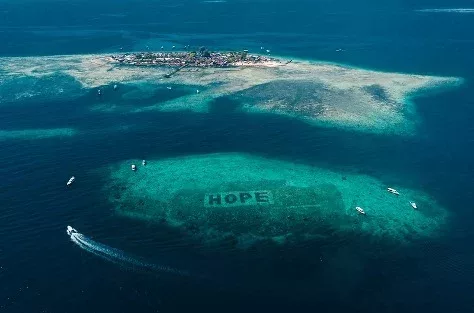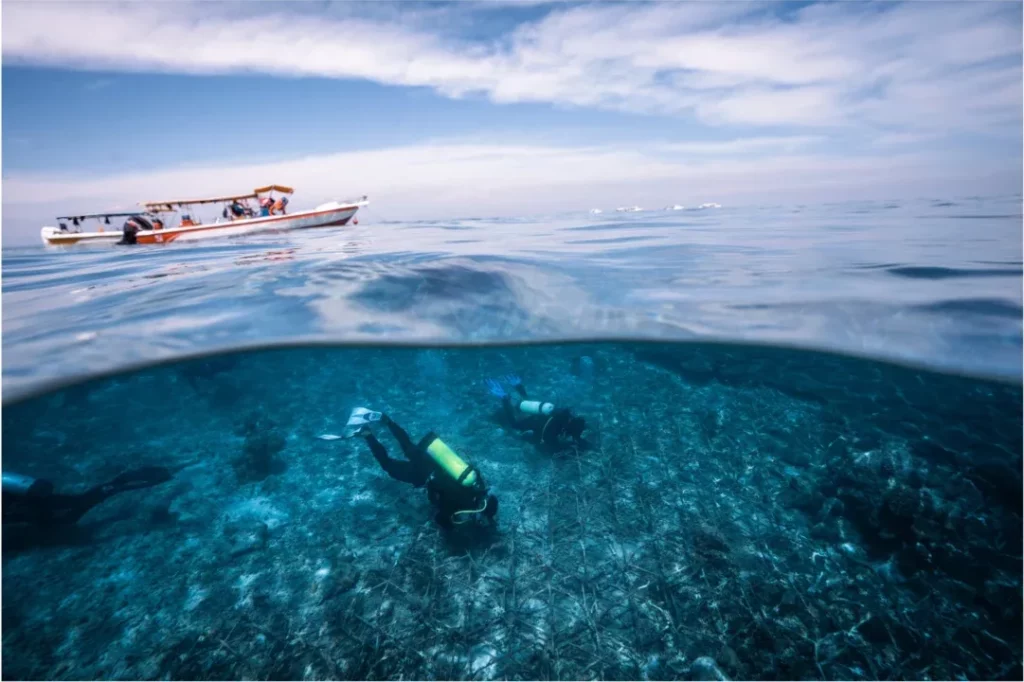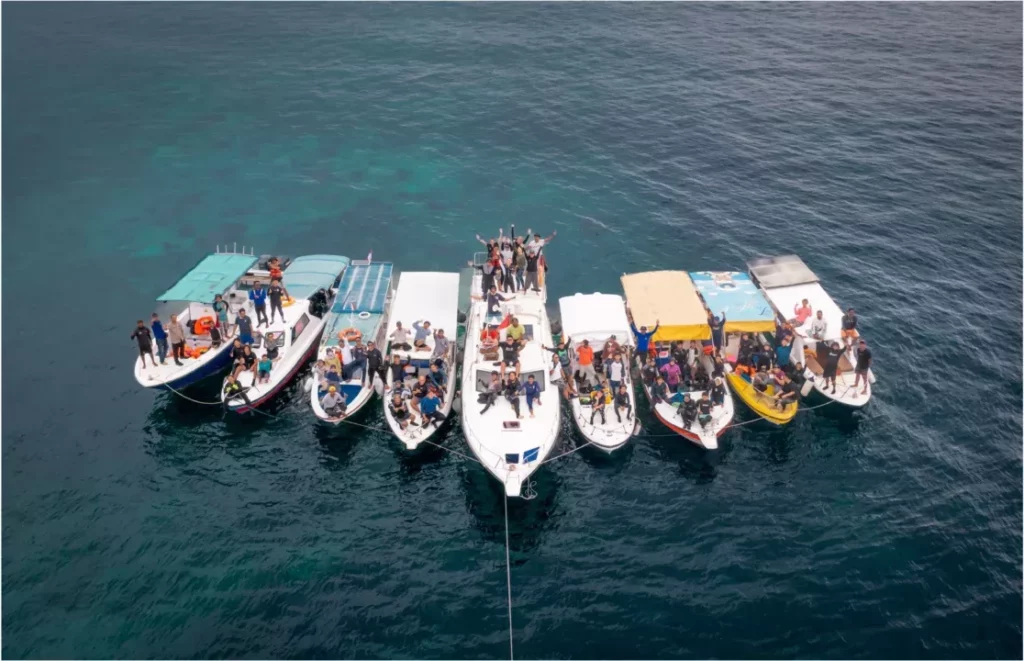The Big Build was a restoration event held in Indonesia, a key member of the ICRI community, during July 2023. The event brought together over 100 participants from 17 conservation and science partners across government, NGO’s, the business sector, and local communities to outplant 30,000 corals and rebuild 2,500 square meters of reef, in 4 days. The event marked a milestone, in ICRI member, Mars, Coral Reef Restoration Program, which has been active for over a decade, by showcasing what can be achieved through their training and capacity program and ultimately through cross-sector collaboration.
The Big Build took place off the coast of Pulau Bontosua in the Spermonde Archipelago, Indonesia, the flagship site of the Mars Coral Restoration Program. In total, around Pulau Bontosua and adjacent reefs, the team have outplanted over 600,000 corals, and implemented detailed ecological monitoring over the past 6 years. This effort has been largely delivered by a dedicated Indonesian team working alongside local university graduates and upwards of 60 individuals (per event) from the local island community. Some members of this island community have gone on to successfully complete dive training and have since formed a community restoration team capable of delivering effective restoration around adjacent islands.
Due to the scale of operations and its longevity, the restoration site within the Spermonde has been used to train many organisations based throughout Indonesia who have outplanted a further 400,000 corals across 20 reef sites. The Big Build was an initiative and opportunity to see what was possible if all these partners came together to deliver against a single restoration objective at a single time point.

The focus of the Big Build was the remaining non-natural coral rubble beds surrounding Hope Reef on the submerged platform of Salisi’ Besar (located southwest of Bontosua) as part of a longer-term initiative to restore the whole 3.5 ha of the historically bomb-fished reef. The event was kicked-off by an opening ceremony attended by several local and national government representatives who highlighted the importance of coral reefs, their commitment to conservation and the need for coral restoration. Immediately following the ceremony all 100 previously trained restoration practitioners, representing 17 different organisations, were placed in to 5 “Build Teams” and received specific training in large- scale logistics and project management, before receiving a refresher on the Mars Assisted Reef Restoration System.

In-water restoration activities started during day two and focused on the installation of 1000 Reef Stars and 15,000 corals through five Build Teams. 500 of these reef stars had been pre-loaded with corals, but the remaining 500 were loaded by the Build Teams in a hectic 2-hour period. All restoration activities were supported by the local community who prefabricated the Reef Stars and provided the driving force behind the attachment of coral fragments. All corals used during the Big Build were collected from the vast areas (>60 ha) of shallow reefs (representing the same environmental conditions as the reefs site to be restored) that were under the same local governance regime as the site to be restored. Loaded Reef Stars were stacked on to local boats and transported the short distance to the pre-mapped restoration sites. Each Build Team then installed 200 Reef Stars, equating to 3,000 corals per team, and 15,000 in total for the five teams combined. Joining each team were several highly experienced restoration practioners who provided post-dive feedback during an end of day team meeting attended by all participants.

Day three was largely a repeat of day two with a further 1000 Reef Stars and 15000 corals being outplanted. Day Four represented the final “in-water” day with all teams being tasked to quality check their individual builds (approximately 500m2 of rebuilt reef each), ensuring no corals had become loose, Reef Stars were firmly attached, and no materials were left behind. All teams were then taken to the large scale and long-term restoration trial located on the adjacent reefs of West Bontosua. Here restoration has been implemented as 11 separate 1000m2 blocks with each block containing approximately 8500 outplanted corals. The first of these 11 blocks were restored in 2017 and all blocks have been fully monitored (including pre-restoration) annually. Consequently, all teams had the opportunity to observe restoration activities spanning nearly 7 years to understand what to expect in this highly productive environment.

To celebrate the four days of this incredible team effort, the Big Build was closed-out with a final session during which all teams reflected on their experience, and focused on identifying ways of working as a collaborative network in to the future, to include the wider sharing of both positive and negative restoration experiences, as well as opportunities across the multiple locations, and environmental settings, they as a wider team, represented.
Whilst this restoration event was over in just four days, it represented more than 15 years of learning and partnership building. More recently Mars alongside its extremely dedicated partners, have expanded the restoration program to 40 reef sites covering eleven countries, installing more than 1.2 million corals. If you require any further information and would like to be involved, please contact the Mars team through their website www.buildingcoral.com
Written by Prof David Smith
Chief Marine Science Officer Mars Inc.

